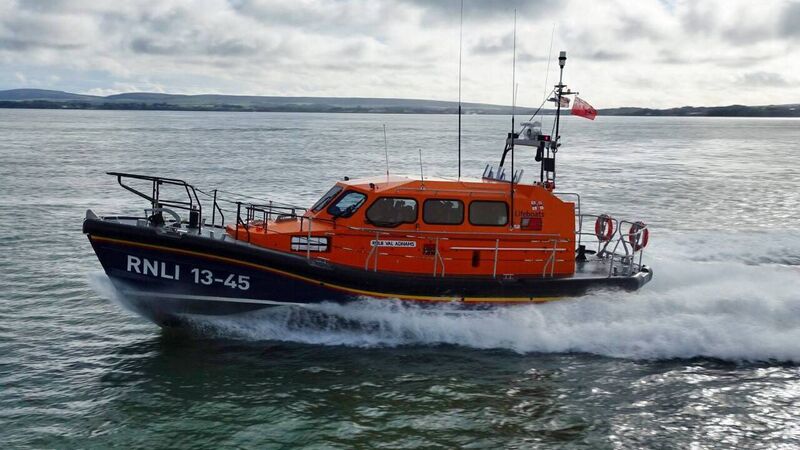West Cork RNLI lifeboat saving lives for almost two centuries

Courtmacsherry RNLI's lifeboat 'Val Adnams'. Picture: Courtmacsherry RNLI
There is a waiting list of volunteers to join Courtmacsherry RNLI, which has been saving lives at sea for 200 years.
Generations of locals have volunteered at the lifeboat station, which, along with the one in Arklow, is the oldest in the country.
There are 30 lifeboat crew members, with several new additions.
“Importantly, we have five new people taken on in the last 12 months… because, like everybody, we’re losing four this year that are retiring,” station launch authority and press officer, Vincent O’ Donovan, told The Echo.
“We’re one of the few stations that actually has a waiting list. We’d love to take on everybody who’s interested.
“There’s something great about Courtmac, in that not alone is it going down from generation to generation, but a lot of new people, as well, express interest.”
Mr O’Donovan said the station would typically be called out to incidents about 20 times a year, with crew members also training regularly.
“We take the boat to sea probably about 100 times: 80 of those would be exercises and 20 would be callouts. That’d be our typical year.
“We’re an all-weather lifeboat and, on both sides of us, then, we have very important lifeboats, the inshore lifeboat in Kinsale and in Union Hall, which are superb boats as well,” he said.
Bicentennial anniversary
Next year will be a particularly special one for the station, as it marks its bicentennial anniversary.
“We’re going all out to celebrate it,” Mr O’Donovan said.
“We’ve lots and lots of ideas [for events] to do during the year, because it’s so special being the very first lifeboat station, along with Arklow, in 1825, and we’re planning numerous different events during the year.”
Mícheál Hurley, who retired in 2021 after more than 44 years, served for almost a quarter of the lifeboat history.
Author of Home from the Sea: The Story of Courtmacsherry Lifeboat 1825-1995, Mr Hurley republished the book last year to coincide with the arrival of the station’s new lifeboat, the ‘Val Adnams’.
His book opens with what is perhaps the station’s most notable callout.
Luisitania
“I didn’t start the book in chronological order, I started with the Lusitania and then I went back to the beginning for chapter two,” said Mr Hurley.
On that fateful day on May 7, 1915, British ocean liner the Lusitania was on a passage from New York when she was torpedoed and sunk by a German U-boat south of Courtmacsherry Bay, with the loss of 1,201 lives.
The Courtmacsherry RNLI volunteer lifeboat was alerted to the tragedy and the crew rowed the Kezia Gwilt 11 miles out to the wreck to help rescue survivors.
In more recent history, Mr Hurley said a night spent at sea in search of a missing pleasure boat in atrocious conditions on the December 19, 1981 will long remain in his mind.
“In my 40 odd years I’ve been out in four storms and that was one of them: Full-blown, it doesn’t get any rougher. That night was horrendous. I actually thought I was going to die.
“I said there’s no way a boat that’s made of timber is going to stick this banging and belting.”
Penlee disaster
The horror of that night would only intensify.
Over the radio, the Courtmac RNLI crew began to hear of the unfolding Penlee RNLI lifeboat disaster: All eight crew members lost their lives attempting to rescue the crew and passengers of a stricken coaster, the Union Star. Sixteen people died in the English maritime tragedy.
But the joyous moments also remain clear in Mr Hurley’s mind.
“It was one of the first calls we got when I joined in 1977… there was a small angling boat broken down and maybe six or eight children there of the crowd on board, and when we came on board just to see the joy on their faces.”







 App?
App?


